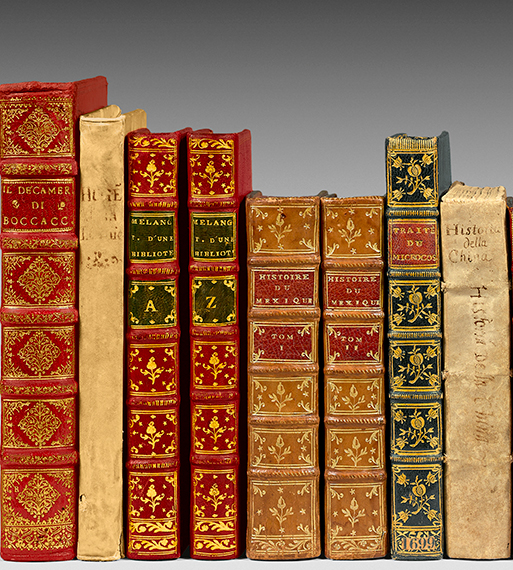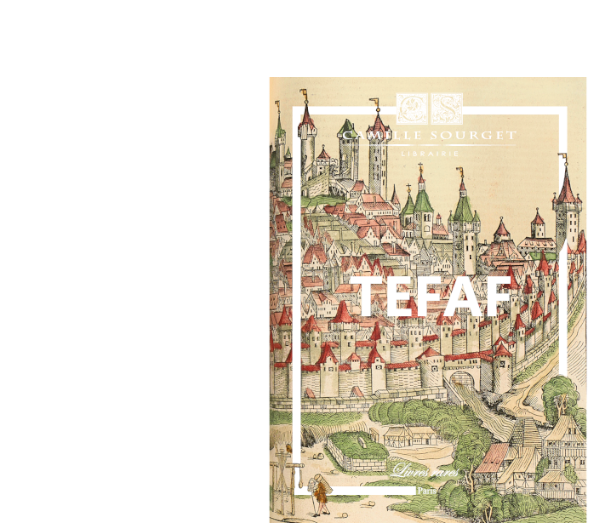First printing of this masterpiece by Brueghel.
Antwerp, 1559-1560.
Brueghel The Elder, Pieter. Fortitudo [La Force].
Antwerp, 1559-1560.
Engraving with burin. Latin legend. Very beautiful margins.
223 x 288 mm (330 x 255 mm with margins).
First printing of this superb print taken from the suite of seven virtues published in 1559-1560.
Leeber, 36; The new Hollstein Dutch & Flemish etchings, engravings and woodcuts, 1450-1700, 18; Van Bastelaer, 137; Sellink, 92; Klein, 53.
Engraving of Fortitude, one of the 7 virtues, by Philippe Galle after a drawing by Pieter Brueghel the Elder, edited by Hieronimus Cock.
Of utmost rarity with such beautiful margins.
This extraordinary masterpiece by Pieter Brueghel engraved with a burin and titled Fortitudo (Fortitude) bears the address of the publisher Jerome Cock.
It is of a strong print.
Before being a painter, Brueghel was a draftsman.
«It was as a student of Pierre Coecke that in 1551 Pieter Brueghel was received into the Antwerp guild. Then, as per the established practice among Flemish painters, at least since Jean Gossart, around forty years earlier, the young ‘Freemaster’ set off to Italy, where instead of, like his contemporaries Lambert Lombart, Frans Floris, examining the works of Leonardo da Vinci, Michelangelo, Raphael, or more recent ones by the last great Venetians Tintoretto and Titian, he avoided the ancient stones, columns, and imposing frescoes to draw in the Roman countryside, precursor in this of modern landscapists. If we do not know the exact itinerary of Brueghel’s journey in Italy, which may have led him through France, we have at least been left with something much more tangible: his earliest known drawings. Let there be no misunderstanding about these drawings; they are by no means sketches. Not only were the very complete drawings that punctuated his entire career almost all destined to be faithfully reproduced by engraving, but also from his first drawings, dated 1552 and 1553, we would have to wait until 1559 to see his first painted work appear.
Without concluding that he had painted nothing before that date, it is nonetheless evident that drawing, as he understood it, was a sufficient and complete means of expression for him. Returning from Italy in 1554, he settled again in Antwerp and worked for Jérôme Cock, a former painter, established, with his brother Mathys, as a publisher and print dealer, under the sign of the ‘Four Winds’….»
Dated 1559, his oldest painting, the ‘Flemish Proverbs’, already mixes rusticity with the strange. To other pictorial proverbs follows the ‘Battle Between Carnival and Lent’, also from 1559, of a vein still fundamentally popular, although already leading to the fantastic through the endeavor of the burlesque. With the Fall of the Rebel Angels, the purely fantastic production of Brueghel opens up, so directly inspired by Jérôme Bosch.» Jacques Busse.
The iconic suite of the seven engravings of the virtues by Pieter Bruegel is perhaps one of his most famous works to date.
It is an astounding series with each print revealing more and more of Bruegel’s limitless sensibility of religious and moral scenes.
Each work is a masterpiece in itself, making this rare and complete series of seven a fantastic suite to have in any collection.
According to Manfred Sellink (2007), “Like the Sins, the Virtues are not an arbitrary selection of attributes, but consist of the three Theological Virtues (Faith, Hope and Charity) and four Cardinal Virtues (Justice, Prudence, Fortitude and Temperance), canonized in medieval times…Bruegel’s representations of the Virtues are starkly realistic. This is not to say that they reflect the world Bruegel lived in, but that the architecture, costumes, mise–en-scène and ‘stage props’ would have been familiar to his contemporaries“.
Created between 1559 and 1561, Pieter Bruegel sought to make this suite of Seven Virtues as a sequel to his previous Seven Deadly Sins. They were originally a series of seven preparatory drawings, only to be engraved by Philips Galle and later published by Hieronymus Cock. Most of these works have been printed on fine, watermarked paper.
Fortitude (Latin Fortitudo) is represented as a courageous angel, standing upon the neck of evil as she tethers the chain around his neck. Nothing seems to distract her, amidst the brewing and tumultuous scene of men in the background, conquering their evil vices. It is splendidly engraved, with fruitful detail and endless action. Featuring the Gothic P with Flower watermark (Br. 8641).
Two lines of Latin in lower margin: animum vincere, iracundiam cohibere caeteraq[ue] vitia et affectus cohibere vera fortitudo est. (To conquer one’s impulses, to restrain anger and the other vices and emotions: this is the true fortitude).
«Mort en 1569, Peter Brueghel was, after Jérôme Bosch, who died in 1516… the great figure of the 16th century Flemish, solidly and clearly positioned between the century of the Van Eyck, Van der Weyden, Memling, extending into Quentin Metsys and the century of Rubens and the Baroques» Jacques Busse.

